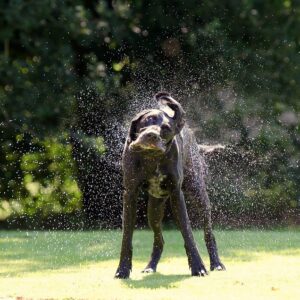Preserving Fido: The Art and Ethics of Taxidermy for Pets
For many pet owners, the loss of a beloved furry friend can be an incredibly difficult and emotional experience. The bond between humans and their pets is often deep and profound, and the idea of saying goodbye to a cherished companion can be heartbreaking. In the face of such loss, some pet owners are turning to a traditional method of preserving their furry friends – taxidermy.
Taxidermy, the art of preserving and mounting animal skins, has been practiced for centuries as a way to create lifelike depictions of animals for display. While taxidermy is most commonly associated with hunting trophies and museum displays, it is also increasingly being used to preserve and display beloved pets.
The process of pet taxidermy typically involves removing the skin from the deceased animal, tanning it, and then mounting it on a form to create a lifelike representation of the pet. The eyes are typically made from glass or acrylic to give the finished piece a realistic appearance. The end result is a preserved version of the pet that can be displayed in the home or kept as a memorial to the beloved companion.
But while pet taxidermy can provide comfort to grieving pet owners, it is not without controversy. Many people find the idea of preserving a beloved pet through taxidermy to be unsettling or even unethical. Critics argue that taxidermy objectifies animals and goes against the natural order of life and death. They believe that pets should be allowed to pass on and be remembered in memories, rather than being turned into a permanent display.
On the other hand, supporters of pet taxidermy argue that it can be a way to honor and remember a cherished pet. For some pet owners, having a lifelike representation of their pet can provide comfort and a sense of closeness, even after the pet has passed away. They believe that taxidermy allows them to preserve the memory of their pet in a tangible way.
Proponents also argue that pet taxidermy can be a form of art, with skilled taxidermists creating beautiful and lifelike representations of beloved pets. In some cases, pet taxidermy can even be used as a way to preserve the genetic material of a valuable or rare breed of animal.
But regardless of the motivations behind pet taxidermy, there are important ethical considerations that must be taken into account. One of the key ethical issues surrounding pet taxidermy is consent. Pets cannot give their consent to be preserved through taxidermy, so pet owners must make the decision on their behalf. Some people argue that this goes against the autonomy and agency of the animal, and that it is unfair to impose taxidermy on the pet without their consent.
Another ethical issue is the treatment of the deceased pet’s body. In order to create a taxidermy mount, the animal’s body must be preserved and altered. Critics argue that this process can be disrespectful to the deceased pet and goes against the natural order of death. They believe that pets should be allowed to pass on in a respectful and peaceful manner, rather than being subjected to the invasive process of taxidermy.
There are also concerns about the emotional impact of pet taxidermy on pet owners. While some people find comfort in having a lifelike representation of their pet, others may find it distressing or unsettling. Some pet owners may struggle with the idea of displaying a preserved version of their pet in their home, while others may find solace in having a tangible reminder of their beloved companion.
Despite these ethical considerations, pet taxidermy continues to be a popular choice for some pet owners. For those who choose to have their pet preserved through taxidermy, it is important to work with a skilled and reputable taxidermist who can create a high-quality and respectful representation of the pet. It is also important for pet owners to consider the emotional impact of pet taxidermy and to make an informed decision that is in the best interest of both themselves and their beloved pet.
Ultimately, the decision to preserve a pet through taxidermy is a personal one that should be made with care and consideration. While some may find comfort in having a lifelike representation of their pet, others may find the idea unsettling or disrespectful. It is important for pet owners to weigh the ethical considerations of pet taxidermy and to make a decision that aligns with their own values and beliefs.
In the end, preserving Fido through taxidermy can be a way to honor and remember a cherished companion. But it is important to approach pet taxidermy with sensitivity and respect, and to consider the ethical implications of preserving a pet in this way. Whether or not pet taxidermy is the right choice for a grieving pet owner is a deeply personal decision that should be made with care and consideration.



